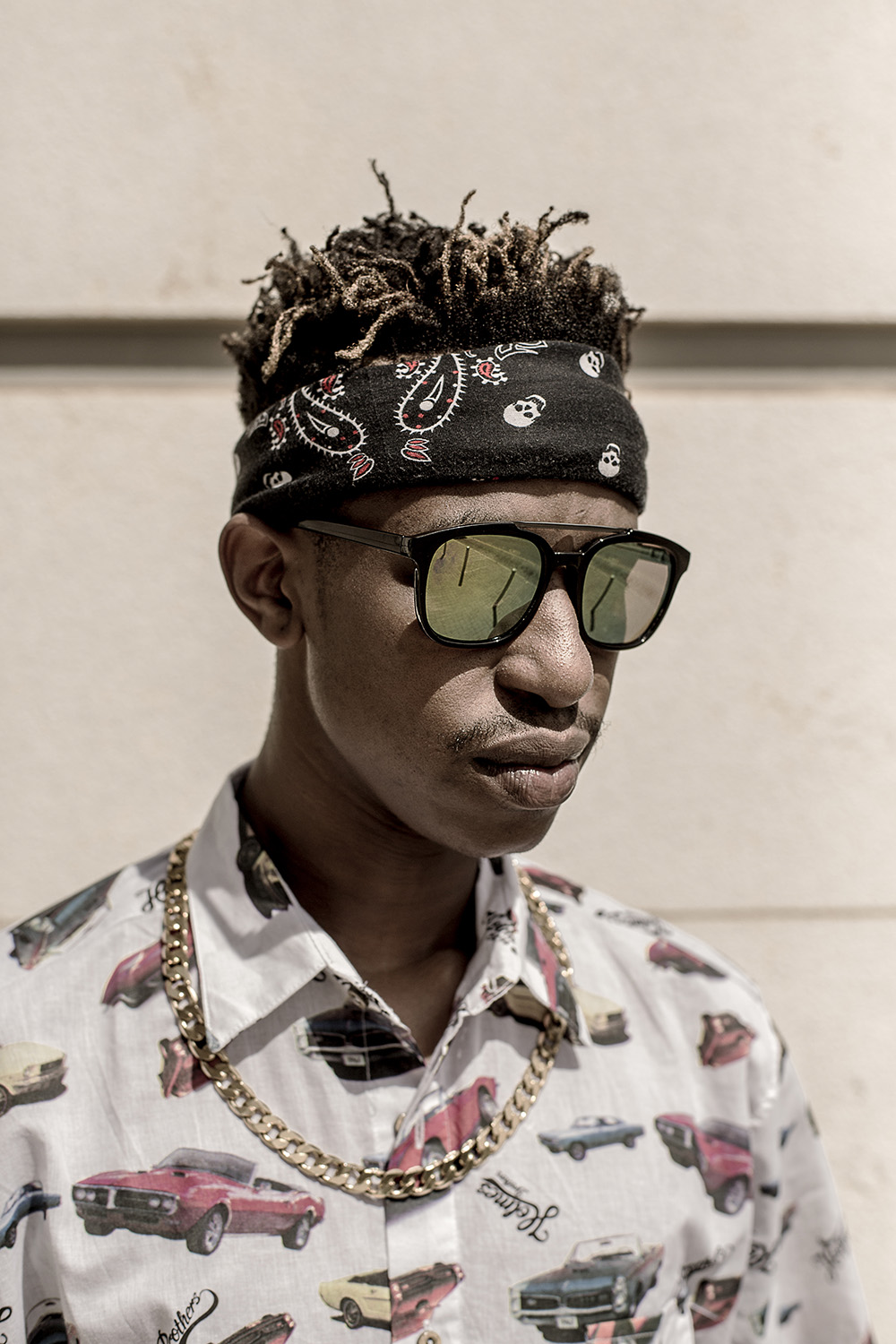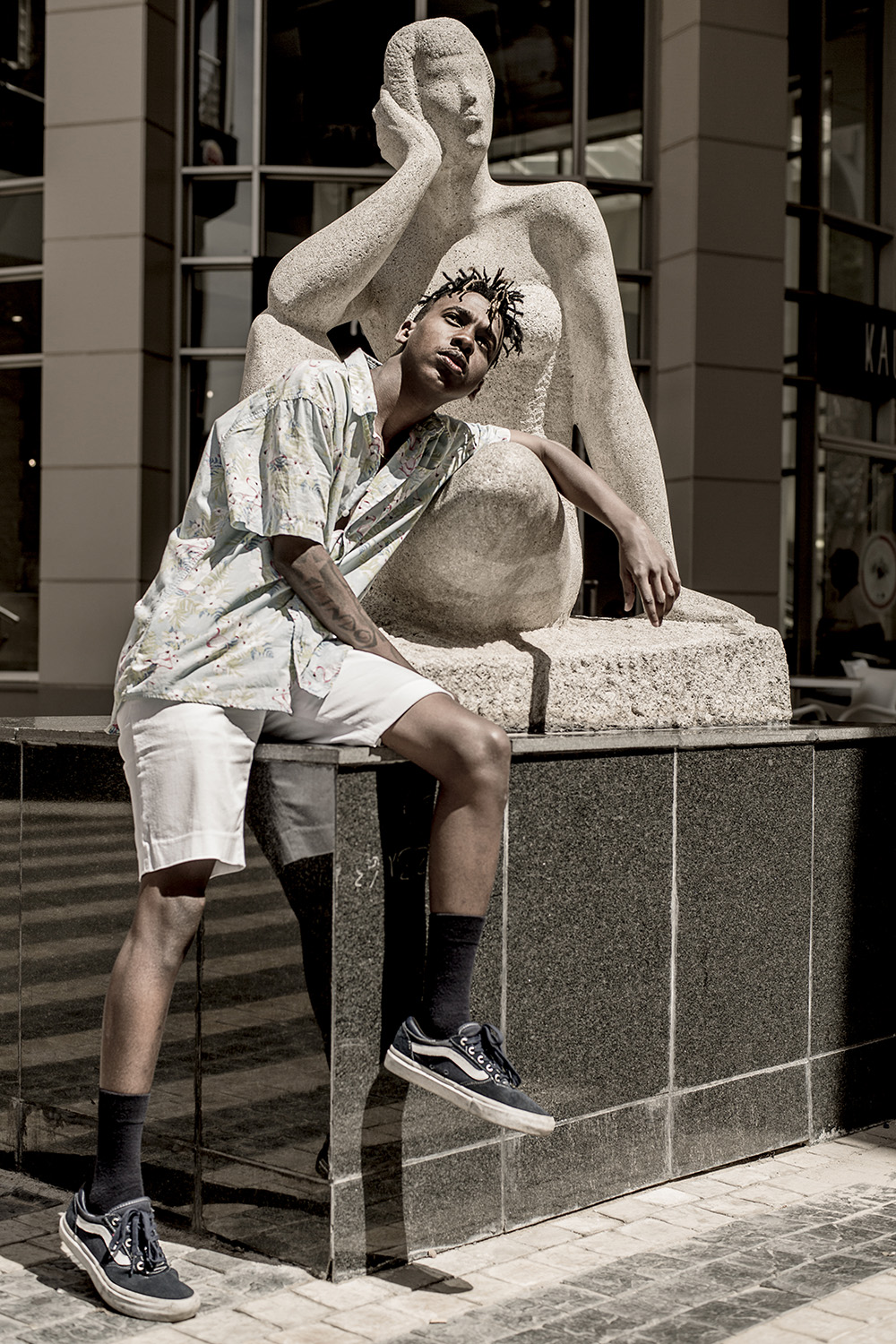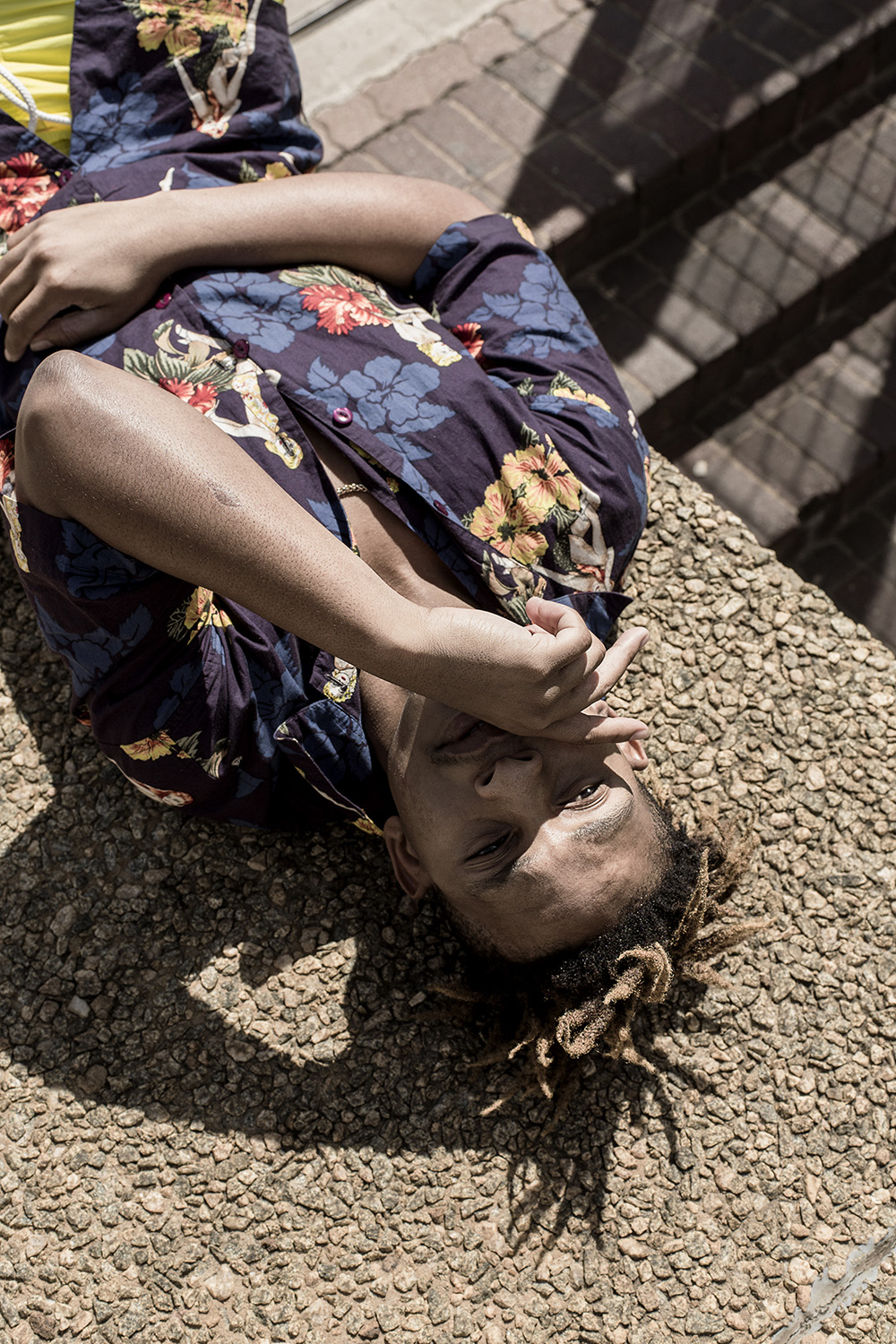In 2014, Durban group Witness the Funk made their first impact on South African consciousness with their hit ‘Nomusa’. The song highlighted smooth multilingual flows over an insidiously catchy beat. It was accompanied by a stylish music video which showed the glamorous side of Durban with parties in tropical mansions and beaches, and long drives down the promenade. WTF have steadily followed up with more group tracks, like the woozy ‘Dreams’ and collaborations such as their striking features on Gigi Lamayne’s ‘Moja’.
The group started in 2010, originally experimenting with an alternative hip-hop sound. But they quickly began to play around with both their musical style and image, solidifying into the current line-up of Efelow, Aux Cable and Moshine Magnif. Throughout they aimed to combine international influences with the sound and vernacular of their home city. The result has been their self-described ‘ Gqom-Trap’ sound. The gqom part refers both to the dark, hypnotic electronic style coming from Durban, and an overall aesthetic that is wild and exuberant. The trap points to the influence of US rap, with the group being inspired by the flow of artists like Migos, but reinterpreted in Zulu and focused on South African life. But their syncretic approach has not been without some (minor) controversy. In 2015, a later deleted tweet from Atlanta rap group Rae Sremmurd dissed them as plagiarists ‘we was watching on MTV Base. We see FUCK BOYS, WTF- Nomusa Guys Wanna be Us WTF Thou??’. The fact that this tweet was later deleted suggests that these allegations were more to do with superficial similarities in clothing and style than actual artistic appropriation. In fact, if Rae Sremmurd had watched more MTV Base they would have probably come across far more serious offenders. Unlike WTF, who combine international influences with Zulu lyrics and local sounds, far too many hip hop artists in SA lazily plunder their accents and references from the US. Rather than mimicking anyone, gqom trap adapts to create a new Durban style. To fully appreciate these innovations requires a detour into the meaning of both ‘gqom’ and ‘trap’.

Musically gqom takes kwaito and house into a dark, menacing direction characterised by ominous drums and threatening synthesiser lines. The style was pioneered by bedroom producers in the townships and shantytowns of Durban, and tested out at underground club nights. A brilliant 2014 article by Kwanele Sobiso suggested that the rawness and minimalism of gqom is a reflection of the stressful urban reality that surrounds it producers- ‘Whereas the best of Durban kwaito production is sleek, with lyrics suggesting upwardly mobility, gqom is loopy, lo-fi and off-beat, sounding exactly like the pervasive nihilism it sometimes documents’. The cinematic heaviness is displayed on compilations like the excellent The Sound of Durban Vol. 1, and while the style is still fairly underground in South Africa its innovative rawness is commanding attention overseas. Gqom nights have popped up in the UK and Europe, and it has received coverage from tastemaker US websites like Pitchfork. The appeal of gqom is conveyed in an often sited quote by UK producer Kode9- ‘like being suspended over the gravitational field of a black hole, and lovin’ it’. Gqom is powerful because while it is totally rooted in contemporary Durban, its dystopian tone has universal relevance. The positive reception in the UK is especially telling, as gqom often sounds like the South African equivalent of the continuum of dark, urban based British electronic music, a line which stretches from Joy Division to Burial. In fact, a Paul Morley quote about how Joy Division musically interpreted bleak 1970s Manchester could equally be applied to gqom’s mapping of the urban landscapes of KZN- ‘It was almost like a science-fiction interpretation of Manchester. You could recognize the landscape and the mindscape and the soundscape as being Manchester. It was extraordinary that they managed to make Manchester international, if you like—make Manchester cosmic’.

Similarly, the trap sound emerges from a specific sense of place. Before it was a genre, trap was a slang term from the Southern US which referred both to the specific location of the ‘trap house’ where drugs were sold from and to an overall condition of being trapped in crime, violence and grinding urban poverty. It became a distinctive musical style in the early 2000’s, when artists like T.I, Young Jeezy and Gucci Mane combined cinematic tales of drug dealing with a bass driven sound. As T.I put it in 2003 ‘I’d probably still be trapping if I wasn’t rapping right now’. Trap rap became commercially successful while maintaining a dark sound and bleak lyrical perspective, but gradually the term began to mutate. EDM artists played a form of trip which kept the sonic architecture but lost the lyrical themes, and it even turned up in songs by pop artists like Lady GaGa and Katy Perry. In rap itself, trap has become more hedonistic and expansive, seen in the ebullient hits of Fetty Wap, the outrageous psychedelia of Young Thugs and Future’s tormented narco-ballads.
WTF are drawing on these sources to create an effective hybrid style. Their music takes a less brutal direction than straight gqom, and adds more focus on individual personality and visual images to what has been a scene primarily represented by faceless producers. Simultaneously, they repurpose American influences for their own purposes. Like Jamaican dancehall and UK grime, rap is crossed with a regional style. The result, like on the their triumphant ‘ Shonaphansi ’ collaboration with DJ Wobbly is music with both mass appeal and a razor sharp experimental edge.




















































